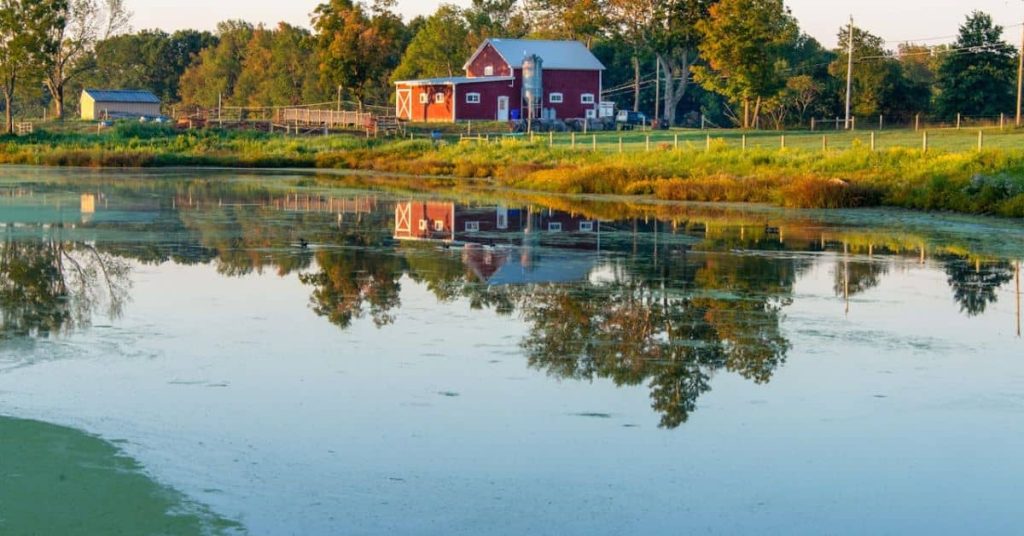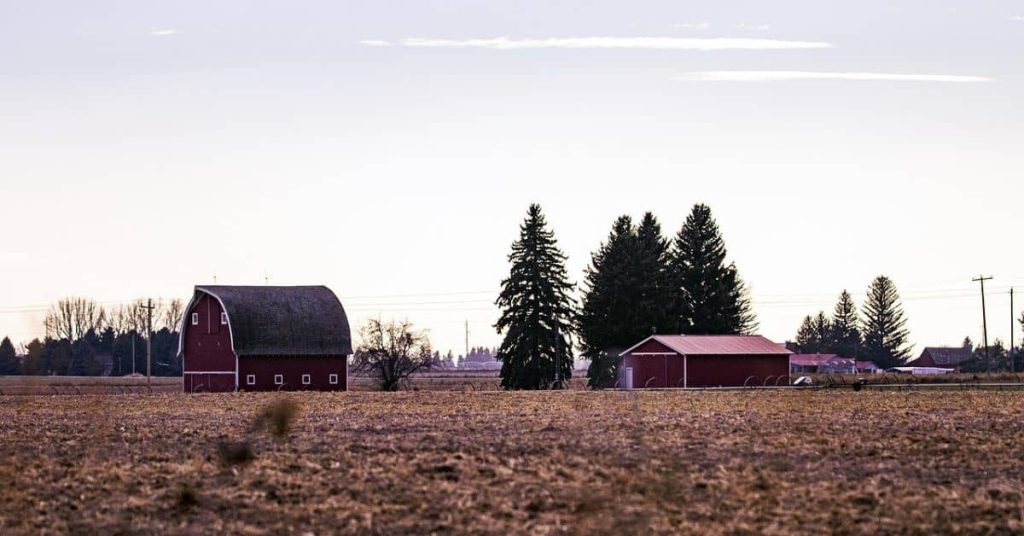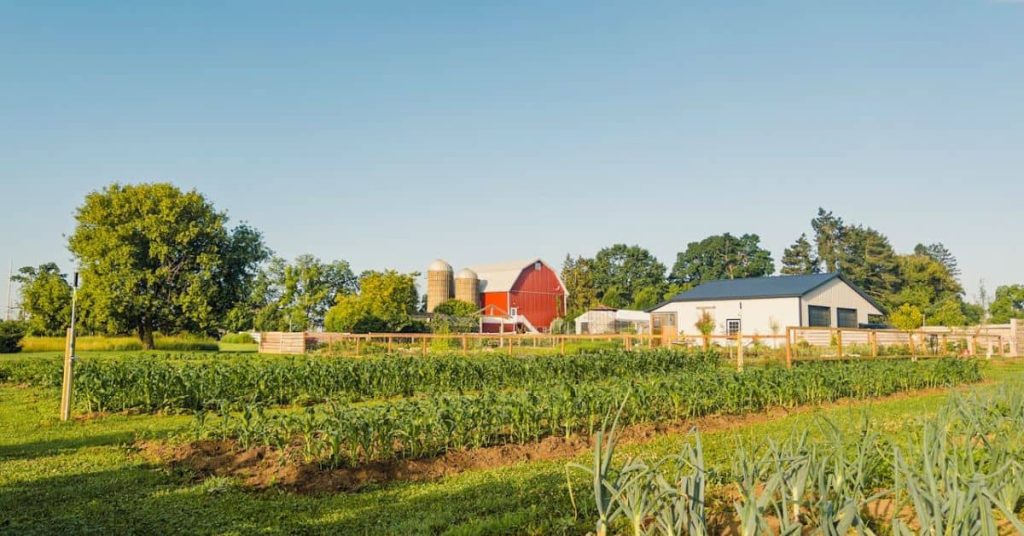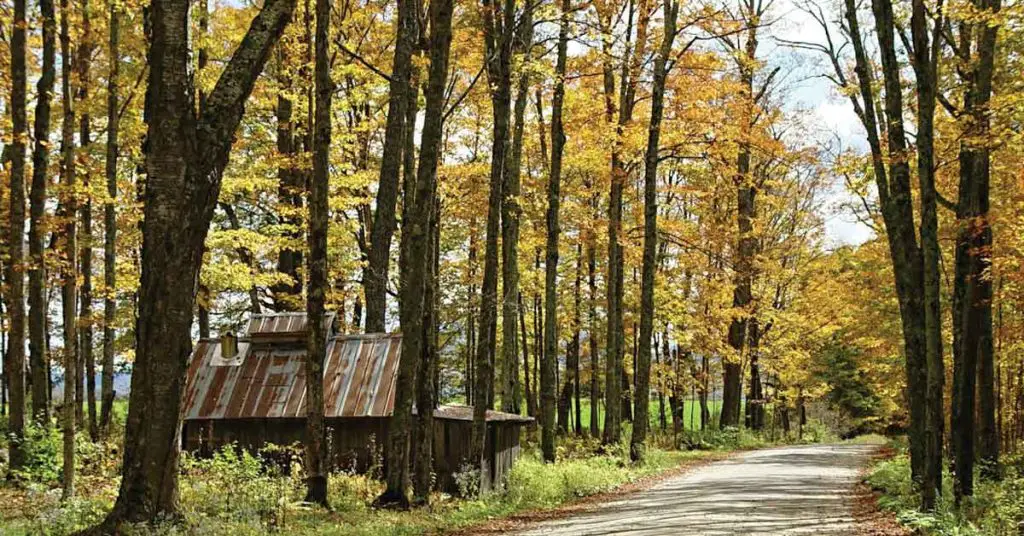Last March, I stood in ankle-deep mud trying to dig post holes on what I thought was going to be a dry, sunny weekend. The forecast said 65 and clear, but what it didn’t say was that Virginia clay holds onto rain like a grudge.
I’d read all the books, watched the YouTube channels, and even scoped out Pinterest layouts for my chicken run. But nothing prepared me for the mix of zoning surprises, soil quirks, and local “unwritten rules” that come with trying to homestead in Virginia.
If you’re thinking about starting your own little slice of farm life out here, I’m glad you’re doing the research. Because I sure wish I’d known a few of these things before I started fencing in soggy ground and guessing at setbacks.
Frequently Asked Questions (FAQs) on Homesteading in Virginia
Short on time? Here are some quick answers to frequently asked questions (FAQs) about homesteading in Virginia before we dive into the full guide.
Q: Do I need a permit to have chickens on my property in Virginia?
It depends on your county. Some places let you keep a backyard flock without paperwork, others limit the number or require a permit, especially in residential zones. Call your zoning office before you build a coop.
Q: How many acres do I need to be considered a farm in Virginia?
Most counties require at least 5 acres used for agriculture to qualify for land-use tax breaks. But you can still homestead on less, as lots of folks start on 1 to 3 acres just fine.
Q: Can I get free land for homesteading in Virginia?
Not really. Some small towns offer incentives for building, but true “free land” programs are rare. Be careful with listings that sound too good, since they often come with hidden costs or legal issues.
Q: What grows well in Virginia for beginner gardeners?
Start with tomatoes, peppers, squash, sweet potatoes, and herbs like basil and mint. They handle the heat and clay soil better than most and give you a solid first harvest.
Q: Where can I get help getting started with homesteading in Virginia?
Check with your local Virginia Cooperative Extension office. They offer soil tests, beginner classes, and advice that’s tailored to your county and climate.
I Thought I Knew What I Was Doing, Then Reality Hit
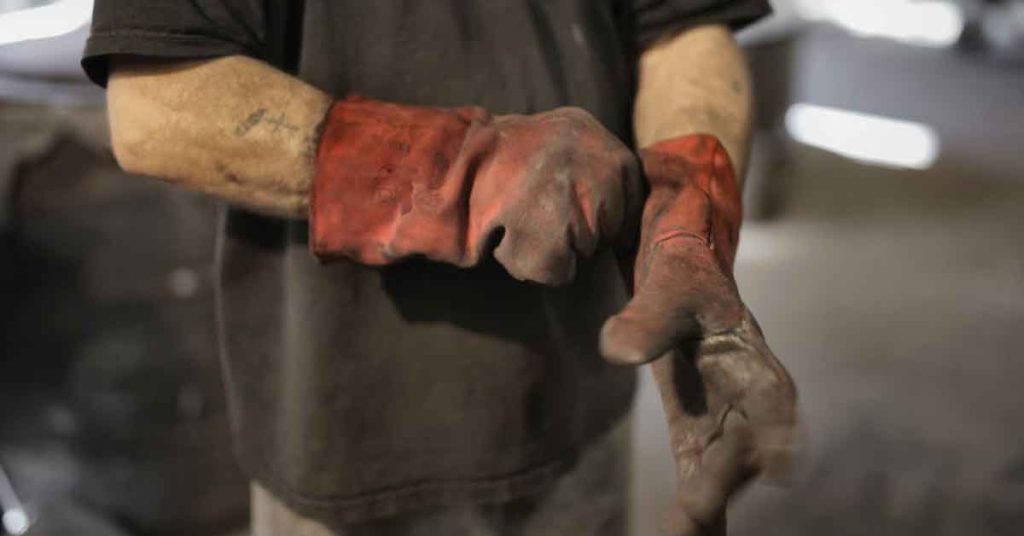
I remember pulling onto the property that first morning with a truck full of fence posts, starter feed, and way too much optimism. I’d spent months planning everything out, for example, garden plots, coop placement, and even where the future orchard would go. But it didn’t take long before “homesteading in Virginia” felt a lot less like a daydream and more like a string of “wait, what now?” moments.
Clay Soil, Confusing Codes, and a Fast Lesson in Local Know-How
Here’s the thing they don’t tell you when you’re watching homestead YouTube channels from Oregon or Tennessee: Virginia’s got its own rhythm. The soil here in my part of central Virginia? Thick, red clay that stays soaked in spring and cracks wide open by August. I lost a full row of potatoes that first year because I didn’t think to mound the beds higher or add drainage.
Then there was the county zoning. I’d read blog posts and thought I understood the rules, but I didn’t know to check for restrictions on temporary structures like the shed I planned to use for feed storage. One quick visit from a well-meaning neighbor (who happened to work for the county) and I was in a rabbit hole of paperwork and permits.
Tip: Call your local zoning office before you build anything, even a chicken coop. Every county in Virginia does things a little differently.
“Is This Normal?”: Questions I Kept Asking (Out Loud)
There were days I stood in the rain wondering if I was doing anything right. Like when the delivery truck got stuck on my muddy driveway or when the water line to the frost-free hydrant froze because I didn’t bury it deep enough. I started to wonder: Is this just what homesteading in Virginia looks like, or am I missing something huge?
That’s when I found the Virginia Homesteaders group on Facebook, and honestly, it changed everything. Folks there shared stories that sounded just like mine; first-year mishaps, soil troubles, how they adjusted their plans on the fly. There’s something oddly comforting about hearing someone say, “Oh yeah, my goat paddock flooded that year too.”
What Helped Me Find My Footing
I started small again. One raised bed, a half dozen chickens, and a compost pile. I spent more time listening to neighbors than reading online forums. One older farmer down the road told me, “Just plant what grows without trying too hard. You’ll figure the rest out.” That stuck with me.
Here’s what really helped:
- Raised garden beds with lots of compost (especially mushroom compost if you can find it locally)
- Asking real people for advice, not just reading national guides
- Keeping my first coop portable, so I could move it if the drainage wasn’t right
You’re Not Failing; You’re Just Starting
If you’re thinking about homesteading in Virginia, especially if you’re new to all this, just know that it’s okay to feel overwhelmed. I sure did. But every busted water line, every patch of poor soil, and every “oops” with local rules is part of learning what works here, not just what works in theory.
One of my favorite quotes from a fellow homesteader near Roanoke was, “You can’t fix everything in year one, but you can grow a lot of tomatoes while you’re trying.”
And that’s pretty much how it goes.
What Even Is a Homestead in Virginia?
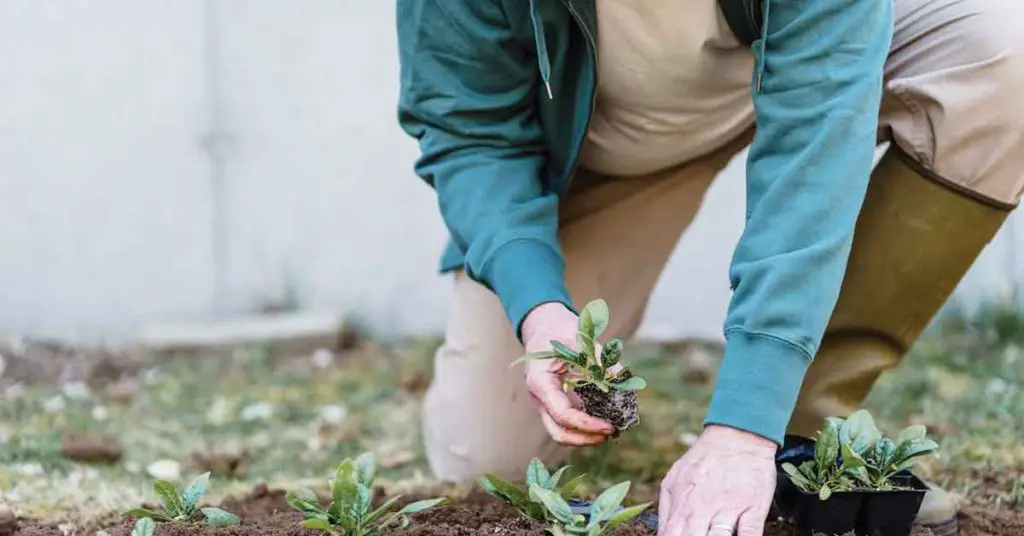
When I first started looking into homesteading in Virginia, I figured it was pretty simple: buy some land, plant a garden, get a few chickens, and you’re off to the races. But once I got into the nitty-gritty, I realized there’s a difference between living like a homesteader and being considered one legally, especially here in the Commonwealth.
Legal Definitions and Common Misunderstandings
So let’s start with the basics: what is homesteading, legally speaking?
In Virginia, “homesteading” doesn’t have a universal legal definition. It’s more of a lifestyle choice, for example, a mix of self-reliance, small-scale farming, and home-based production. You don’t have to be completely off-grid or grow 100% of your food to call yourself a homesteader.
But when it comes to laws and money, for example, taxes, asset protection, or zoning, you’ll want to understand a few specific terms.
What Qualifies as a Homestead (and What Doesn’t)
If you’ve heard folks talk about the Virginia Homestead Exemption, they’re referring to a legal protection that shields a portion of your property’s value from creditors. As of now, the exemption can cover up to $25,000 in equity for an individual ($50,000 for married couples), but you have to file a homestead deed in your county’s circuit court to claim it.
I’ll be honest: I didn’t even know that was a thing until I read about it on FindLaw. It’s not automatic, and it doesn’t apply to all types of debt. But if you’re starting a small homestead and investing in land, livestock, or tools, it’s worth talking to a local attorney or checking in with the county clerk’s office.
“Most new homesteaders skip over this step,” said David S., a semi-retired property lawyer in Augusta County. “But it can make a big difference down the line if you ever face financial trouble.”
Don’t Confuse the Lifestyle with a Legal Label
Another thing that tripped me up early on: just because you’re homesteading doesn’t mean the county or state sees your land as a “farm” or gives you any tax perks.
I thought raising chickens and growing tomatoes would automatically put me in a different tax bracket. Turns out, you usually need a certain acreage and income threshold to qualify for land use taxation. In most Virginia counties, that’s about five acres (more for forest land) and proof you’re producing a commercial product.
So if you’re selling eggs at the local market, keep those receipts. They might help your case when it’s time to apply.
Filing a Homestead Deed: What It Costs and Why It Matters
Filing a homestead deed in Virginia is fairly straightforward, but it does cost a little, usually around $20 to $30, depending on the county. You’ll need to list the assets you’re trying to protect, like your house, tractor, or even your livestock.
I wasn’t sure this would be worth the hassle, but after a local family I know had to deal with a medical lien on their land, I went ahead and filed mine. Took less than an hour with the help of the clerk’s office, and now I sleep a little easier knowing we’ve got that buffer.
Is It Worth the Trouble?
Short answer? Yeah, it can be, especially if you’re putting real time and money into your setup.
Legal stuff isn’t the fun part of homesteading in Virginia, but it’s part of the foundation. Just like soil prep, if you ignore it too long, things can get messy later.
So before you build, buy, or borrow, take a minute to:
- Check your county zoning regulations
- Ask about land use assessment programs
- Consider whether filing a homestead deed makes sense for your situation
These aren’t glamorous steps, but they’ll save you from bigger headaches later. Trust me, I learned the hard way so you don’t have to.
How Many Acres Is “Enough” Around Here?
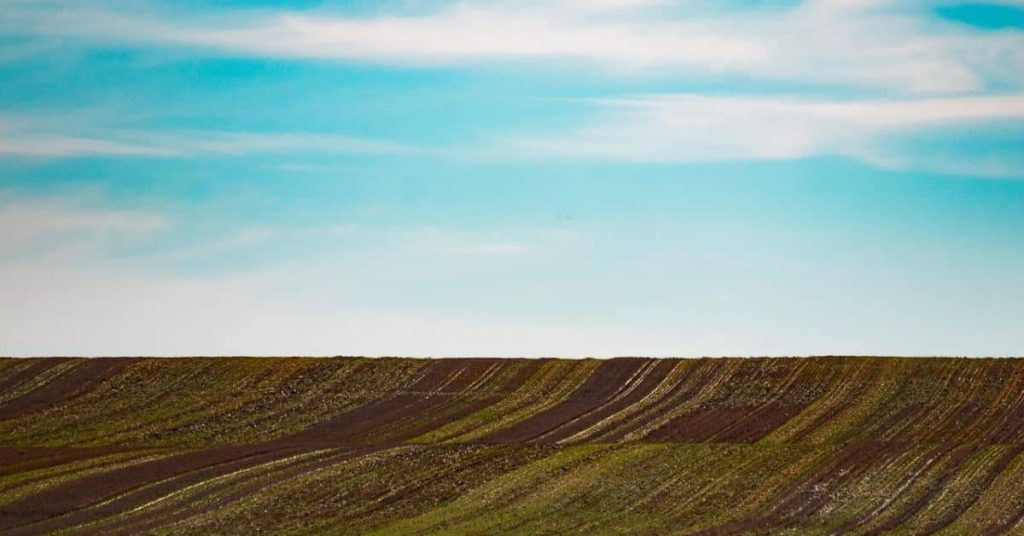
When folks first hear you’re homesteading in Virginia, one of the first questions they’ll ask is: “So how much land do you have?” I used to think there was some magic number, for example, if I didn’t have 20 acres, I wasn’t doing it “right.”
Turns out, that’s not how it works at all.
Farm Status vs. Backyard Setup
Let’s clear up one thing: how many acres do you need to be considered a farm in Virginia? It depends on what you’re trying to do.
If your goal is to qualify for land-use taxation (which lowers your property tax rate), most counties require at least five acres actively used for agriculture, and you’ll usually need to show some income from it, such as selling eggs, honey, veggies, etc.
But if you’re just starting out, especially on a budget, don’t stress about that. I know plenty of folks making a real go of it on under 3 acres. I started with 2.5. On that small patch, I’ve got two raised-bed gardens, a 12-bird chicken coop, a compost setup, and even room to try a few fruit trees.
“I’ve got 1.8 acres in Culpeper,” shared Karen M. on a local homesteading Facebook group. “Between my ducks, raised beds, and greenhouse, I don’t feel limited. It just forces me to plan smarter.”
If you’re just figuring out whether this lifestyle fits you, it’s okay to start small and grow into it.
Affordable Farmland in Virginia
Now, if you are looking to go bigger, or want a place that could eventually qualify for farm status, there are still affordable homesteads for sale in Virginia. You just have to know where to look.
Start by checking land under $5,000 an acre in rural counties like Appomattox, Charlotte, or parts of Southwest Virginia. Sites like LandSearch or Virginia Land and Farms often list smaller lots or fixer-uppers at fair prices.
But be realistic: anything under $5,000 total (not per acre) is probably raw land with no power, water, or septic, which is great if you’re going off-grid, but more work up front.
County Zoning: Why You Need to Ask Before You Buy
Here’s something I wish I’d known earlier: just because a property looks perfect doesn’t mean you can do what you want on it.
Zoning laws vary a lot by county. Some places won’t let you keep more than a few chickens unless you’re on a certain lot size. Others might restrict mobile homes, tiny houses, or even temporary structures like hoop houses.
When I called my zoning office, I expected a stuffy conversation full of legalese. But the lady who answered walked me through everything I needed to know and even pointed me to my county’s online zoning map.
Tip: Check your local zoning before you make an offer. Or better yet, visit the Virginia Department of Agriculture and Consumer Services (VDACS) site, as they’ve got links to zoning and land-use resources for most counties.
“I almost bought 6 acres in Orange County before learning they wouldn’t let me build a second structure without a special permit,” said Thomas P., a reader who emailed me last fall. “That would’ve cost me thousands and delayed everything.”
So, How Much Do You Really Need?
Ask yourself a few honest questions:
- How much time do I have each week for upkeep?
- Am I trying to feed my family or run a business?
- Do I want animals, and if so, how many?
If you’re raising a few hens, growing a garden, and learning the ropes, 1 to 3 acres is plenty. If you want goats, pigs, or space to sell produce, 5 to 10 acres gives you more flexibility. And if you’re looking to build a long-term legacy, something closer to 20+ acres might make sense.
But no matter how much land you end up with, here’s the key: use it with intention. Don’t just fill space, but plan for what you need to feel successful on your homesteading journey.
And remember: it’s better to fully use a small plot than feel overwhelmed by a big one. Been there, done that.
What Actually Works on Virginia Soil and Weather?
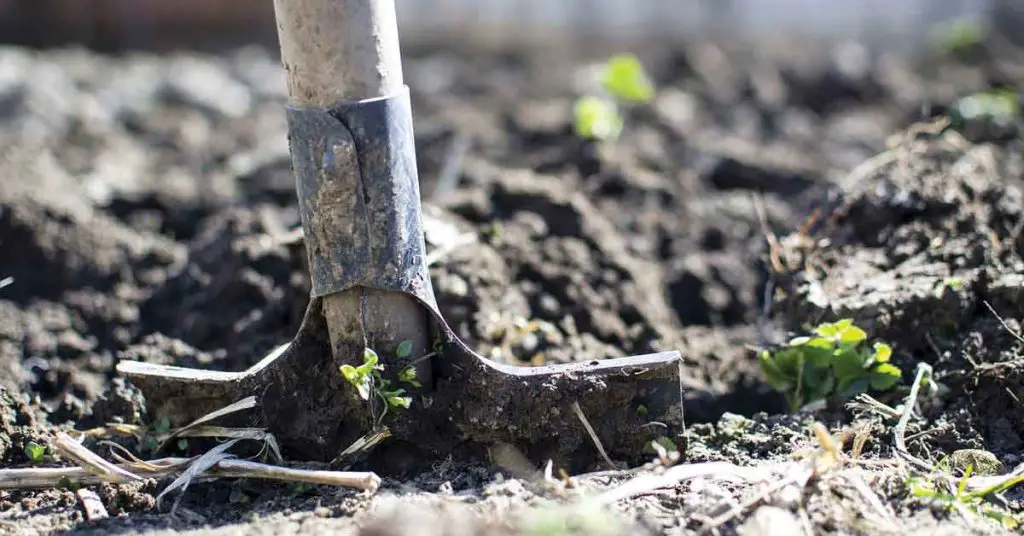
One of the biggest wake-up calls I got when I started homesteading in Virginia was just how different the land behaves depending on where you are, and what time of year it is. The books and blogs I read didn’t mention that our clay-heavy soil can go from sponge to concrete depending on the season. Or that the humidity here isn’t just uncomfortable for people, since it affects what you plant and what kind of animals thrive.
Crop Choices and Soil Conditions
When I put in my first garden, I planted straight into the ground. That was a mistake. By June, the tomato roots were waterlogged and my squash looked like they were trying to escape a mud pit.
Virginia soil is often heavy with red or gray clay, especially in central and southern parts of the state. It holds water in the spring, which is great for rain catchment but terrible for root veggies if your drainage isn’t right.
Here’s what helped:
- Raised beds with added compost: mushroom compost from a local nursery made a huge difference.
- Cover cropping with clover and daikon radish in fall: those deep roots break up the clay naturally.
- Mulch early and often: we get hot spells that will bake the topsoil if you’re not careful.
A neighbor up in Louisa County told me she uses straw bales as raised bed borders and fills them with a compost-soil mix. “It’s easier to manage than digging out clay,” she said, and after trying it myself, I can say it’s way less backbreaking.
Another thing: planting schedules in Virginia run a little early compared to up north. For example, you can usually start your cold crops in late February or early March depending on your zone. (We’re mostly zones 6B to 8A across the state.)
Chickens and Livestock That Can Handle the Heat
If you’re raising animals, the weather’s another challenge, especially in summer. That sticky Virginia humidity wears on livestock just like it does on us.
When it comes to raising chickens in Virginia, you’ll want breeds that handle both heat and moisture without getting fussy. What’s worked for me:
- Buff Orpingtons: calm, hardy, and good layers even in the muggy heat.
- Australorps: another gentle breed, with great egg production and good tolerance to weather swings.
- Easter Eggers: a little more varied in behavior, but great with kids and colorful eggs are a nice bonus.
Avoid breeds that are super flighty or prone to heat stress, such as Leghorns. They might do fine in a drier climate, but I lost two my first summer during a sudden hot spell when the coop wasn’t getting enough airflow.
For sourcing, I recommend checking out small regional hatcheries or farmer co-ops. One I like is Chesapeake Hatchery, which focuses on heritage breeds that do well in the mid-Atlantic. You can also find backyard poultry swaps on Facebook Marketplace or in local homesteading groups. Just ask around.
“We raise Rhode Island Reds near Harrisonburg,” said Greg T., a retired teacher turned homesteader. “They’re steady layers and never had trouble through the worst of July, as long as they’ve got shade and cool water.”
Don’t Forget the Bugs and the Mud
Here’s something nobody warned me about: the bugs. Ticks are serious business in rural Virginia. If you’ve got tall grass, goats, or dogs running loose, plan on regular checks and treating your yard with diatomaceous earth or other safe options.
And the mud? It’ll swallow a boot whole if you’re not careful. Make sure you’ve got good paths and gravel in high-traffic areas, especially around animal shelters.
Whether you’re starting small or going all-in, remember this: homesteading in Virginia means working with the land, not against it. The weather might test you, and the soil might fight you, but once you learn its patterns, there’s a lot you can grow, both literally and otherwise.
What Caught Me Off Guard the Most

When I first started homesteading in Virginia, I had this picture in my head, for example, morning coffee on the porch, fresh eggs in the basket, and quiet evenings under the stars. And sure, I’ve had days like that. But the road there was bumpier than I expected. Some of the biggest lessons didn’t come from books or blogs. They came from the unexpected stuff, such as the setbacks, the fine print, and the muddy boots.
Real-Life Surprises and Setbacks
No matter how many books you read or videos you binge, nothing fully prepares you for that first year of homesteading in Virginia. You think you’re ready, maybe even a little ahead of the game, but then the soil’s different than you expected, the fencing costs double, or the county throws you a zoning curveball.
What surprised me most wasn’t just how many things I got wrong, but how fast they came at me. It felt like every time I crossed something off my list, two more popped up. And it wasn’t just the money or the regulations, but also the quiet stuff too, like feeling isolated, feeling unsure, and wondering if I’d made a huge mistake.
If you’re standing at the edge of this life, ready to jump in, here are a few things I wish someone had told me before I landed flat-footed in a muddy trench full of hard-earned lessons.
The Real Cost (It Adds Up Quick)
So, how much does it cost to start a homestead in Virginia? More than I thought. I had this idea I’d save money by growing my own food and raising animals. But the first year, I spent more on fencing, tools, coop materials, and basic soil amendments than I’d budgeted for the whole setup.
One neighbor told me, “Whatever number you start with, double it.” He wasn’t wrong. The biggest surprise was the little stuff that added up fast: hoses that split, predator-proof latches, permits for outbuildings, and replacing cheap tools that broke too soon.
My advice? Start with what you really need, and buy quality when you can. A $100 shovel that lasts 10 years is cheaper than three $40 ones that break in one season.
Land Ownership Isn’t Always Straightforward
Here’s a weird one: I actually looked into free land in Virginia, which you’ll see that pop up if you’re Googling “homesteading in Virginia for free.” But here’s the deal: most of those offers are old or come with strings attached, like building within a year or living off-grid without reliable utilities. And even if the land’s cheap, the infrastructure isn’t.
And no, you can’t legally “take over” land here. I saw someone on a forum mention squatter’s rights, but in Virginia, adverse possession laws require 15 years of open, continuous use, and even then, it’s a legal nightmare. I wouldn’t bank on it.
If you’re tempted by a super cheap or abandoned-looking plot, do your homework. I looked at a five-acre piece listed for under $5,000 once. Sounded like a dream. Then I found out it was landlocked (no road access), had no water source, and the title was tied up in probate. That’s not a deal, but a trap.
“I bought what I thought was a great deal outside Buckingham County,” said Ray L., a retired mechanic who now raises goats. “Turns out the land had old logging rights attached. I spent two years trying to clear it legally.”
The Emotional Stuff Is Real, Too
I wasn’t prepared for how hard some days would feel, especially early on. You put your heart into this dream, and when things go sideways (like your first rain barrel collapses or your chickens get taken out by a fox), it hits harder than you’d think.
There were nights I sat on the porch and wondered if I’d made a mistake. But over time, those rough moments got fewer and the wins felt bigger. The first egg, the first harvest, the first fence post that actually stood straight: these all added up.
Here’s What Helped Me Push Through
- A journal: Not just to track expenses and planting, but to look back and see progress.
- Neighbors who’d been there: Nothing beats hearing, “Yep, that happened to me too.”
- Letting go of perfect: I gave myself permission to start small, mess up, and course-correct.
If you’re new to homesteading in Virginia, know this: the setbacks aren’t signs you’re failing. They’re just part of the deal. Learn what you can, laugh when you can, and remember: every homesteader you admire started somewhere. Usually with a broken water line and a half-built chicken coop.
Want to share your “what I didn’t expect” story? I’d love to hear it, and I bet someone else out there needs it, too.
Where’s the “Best” Place to Homestead in Virginia?

I used to think there had to be a perfect spot, for example, one magic county where the land was cheap, the weather was mild, and nobody cared if you built a composting toilet. Truth is, homesteading in Virginia means different things depending on where you are. What works for someone in the Shenandoah Valley might be a headache in Southside. So instead of chasing “best,” I started asking: What fits our life, our budget, and our plans?
Pros and Cons by Region
When folks ask where the best place to homestead in Virginia is, I always hesitate before answering. Because “best” depends on you, such as your budget, your skills, how close you want to be to town, and whether you’re okay with a gravel road turning into soup every spring.
Virginia’s geography gives you choices. Rolling hills, mountain valleys, deep forest, river bottoms: each region has its own flavor, with benefits and quirks. Some offer affordable land and privacy, others have richer soil and better access to markets or community support.
So instead of chasing someone else’s dream setup, I recommend looking at what you actually need, and then matching that to the land. Here’s how a few key regions stack up based on what I’ve seen (and where I’ve almost moved more than once).
Shenandoah Valley
This is probably one of the most talked-about spots for homesteaders in Virginia, and for good reason. The soil is some of the best in the state, with a strong agricultural history. Summers are warm but not blistering, and winters stay cold enough to knock back pests.
You’ll find a supportive farming community here, too. Places like Rockingham and Augusta Counties have farmers markets, local suppliers, and folks willing to trade or barter if you ask around.
“We moved from northern Virginia to just outside Staunton,” said Martha B., who runs a small flower farm. “It felt like stepping into a different world. Slower pace, helpful neighbors, and our kids have space to run.”
Watch out for: rising land prices. You’re not the only one who thinks this area is great. Affordable farmland in the Valley is still out there, but it goes fast.
Southside and South-Central Virginia
If you’re on a tighter budget or looking for something more remote, Southside counties like Charlotte, Lunenburg, and Halifax offer some of the most affordable farmland in Virginia. I’ve seen 10-acre homesteads for sale here under $80,000, especially if you’re open to fixer-uppers or raw land.
There’s a bit more humidity and fewer urban conveniences, but that also means quieter roads, more wildlife, and neighbors who mostly keep to themselves unless you ask for help, and then they show up with tools and sweet tea.
I wasn’t sure this would work for me when I first looked down there. But a buddy of mine set up a small goat dairy on 7 acres in Mecklenburg County and swears he wouldn’t live anywhere else.
“I traded traffic for roosters,” he joked. “Best deal I ever made.”
Watch out for: fewer resources. Fewer feed stores, longer drives to town, and you’ll want good internet if you’re planning to work remotely.
Blue Ridge Foothills
Counties like Floyd, Franklin, and Nelson sit along the edge of the Blue Ridge Mountains. If you’re looking for elevation, privacy, and off-grid potential, this region’s hard to beat. Some areas even have spring-fed properties, which are gold if you can find them.
But be prepared: mountain land often means slope, and slope means challenges with building, fencing, and gardening. You’ll also need to make sure your access road won’t wash out every spring.
That said, folks out here are some of the most self-reliant I’ve met. And community potlucks, seed swaps, and barter groups are alive and well.
“I live off the Blue Ridge Parkway in a cabin I built myself,” said Daniel R. “We haul water, raise ducks, and grow just enough to get by. It’s not for everyone, but it’s everything to me.”
Watch out for: building restrictions and access issues. Always check for recorded right-of-way and local building codes before buying.
So, Where’s Your Best Place?
If you’re asking “Where is the best place to homestead in Virginia?”, the honest answer is: it depends on your needs.
Ask yourself:
- Do I want community or solitude?
- Can I handle remote living or do I need to be near services?
- How much do I want to spend, and am I okay with raw land?
Start by looking at a few listings and talking to folks who already live there. Join a regional homesteading group and just listen for a while. I found my land by word of mouth, as someone at a goat seminar mentioned a neighbor selling 3 acres, and the rest is history.
No matter where you land, there’s room for your version of homesteading in Virginia. And that, to me, is the best part.
So, How Do You Actually Get Started?

If you’re wondering how to start homesteading in Virginia, you’re not alone. I asked the same thing standing on an empty lot with a shovel, a dream, and zero experience with goats or compost. The good news? You don’t need a perfect plan to begin, but just a little direction and a willingness to learn as you go.
First Steps That Actually Help
Starting out can feel overwhelming. One minute you’re dreaming about chickens and garden beds, and the next you’re knee-deep in zoning terms, soil tests, and wondering how to tell if a fence charger works.
But here’s the good news: Homesteading in Virginia doesn’t require perfection on day one. You don’t need to have a tractor, a greenhouse, or even land yet. What you do need is a willingness to start with what you have, and keep learning as you go.
These are the first steps that made a real difference for me, and that I still come back to whenever I feel stuck or stretched too thin.
Start With the Land You Have (or Can Afford)
Whether you’re buying land or working with a backyard, don’t wait for “someday.” I started with a few raised beds in the rental we were living in while saving for land. Those first failures (and small wins) taught me more than any YouTube video.
If you’re buying, take your time. Walk the property in the rain if you can. It’ll show you where water collects, how the soil drains, and what your boots are really getting into.
“We thought we found the perfect place near Farmville,” shared Beth M. in a Virginia homesteaders forum. “Then we learned the well hadn’t been tested in ten years and the access road wasn’t legally recorded. Dodged a bullet.”
Choose One Thing and Get Good at It
Trying to do everything at once, such as gardening, chickens, canning, building a shed, just leads to burnout. What worked for me was starting with just chickens. I read everything I could, asked questions, and built a coop I was proud of (even if it leaned a little to the left).
A friend of mine started with herbs on a windowsill and grew from there. Whether it’s soil, animals, or homegrown food, just start somewhere.
Community Support and Resources
You don’t have to figure out homesteading in Virginia alone. There are folks all over the state who’ve walked this road already, and most of them are happy to share what worked (and what didn’t).
Cooperative Extension Programs
Start with your local Virginia Cooperative Extension office. These folks are a goldmine of region-specific advice. They offer soil testing, free workshops, and one-on-one support, especially for new and small-scale farmers.
Check out the Small Farm Outreach Program through Virginia State University. They focus on helping first-time landowners and minority farmers build up their operations.
“The extension agent in my area gave me a full crop calendar and even walked my land to help figure out drainage,” said Jermaine P., who started a backyard farm in Petersburg. “That saved me a ton of mistakes.”
Learning from Others (Without Getting Overwhelmed)
I spent too many nights reading Reddit threads until my head spun. But honestly, the Homesteading in Virginia subreddit and local Facebook groups are where I got real answers. People post what’s working in their exact climate, what breeds are holding up in the humidity, and even what feed stores carry non-GMO options.
Don’t be afraid to ask “dumb” questions. One of the most liked posts I’ve ever seen was someone asking how to tell if their compost was ready. We’ve all been there.
Institutes and Grants
The Virginia Sustainable Homestead Institute offers hands-on courses and online workshops, from permaculture to solar setups. It’s worth checking their seasonal calendar.
As for financial help, there are small grants and low-interest loans out there, especially through USDA and state-level programs. Look into beginning farmer grants, women in agriculture initiatives, and county-specific incentives. Just don’t expect to live off the grants, as they’re more like a boost than a paycheck.
What If I Still Feel Overwhelmed?
That’s normal. You’re not doing it wrong.
Here’s what helped me:
- I kept a homestead journal with to-do lists and wins (even tiny ones like “first sprout!”).
- I asked a neighbor for help fencing a garden and offered free eggs in return.
- I gave myself permission to learn out loud.
If you’re just beginning homesteading in Virginia, the best thing you can do is start where you are, with the time, money, and space you’ve got, and build from there.
Want a checklist of where to look for land, what to plant first, or how to pick a chicken breed? Just say the word, and I’ve got some real-world tools I can share.
How Virginia Homesteaders Are Coping with Rising Chicken Feed Costs

It hit me one morning when I went to pick up a 50-pound bag of layer feed and saw the price had jumped again, by nearly $4 in just a few weeks. I looked at the feed store clerk, and he just shrugged like, “Yeah, it’s like that now.”
If you’re homesteading in Virginia and raising chickens, you’ve probably felt this too. The cost of feed isn’t just a pinch, but it’s turning into a monthly budgeting puzzle, especially for folks with more than just a backyard flock.
But like with most things on the homestead, Virginians are finding ways to adapt. Here’s what’s working on the ground, from creative feed alternatives to smarter sourcing and a bit of good old-fashioned bartering.
Stretching What You’ve Got (Without Sacrificing Health)
I used to feed only commercial pellets, thinking anything less would be cutting corners. But I’ve since learned there are safe, healthy ways to stretch feed, especially when the price climbs like it has in 2024 and 2025.
Here’s what’s worked for me and a few neighbors:
- Fermenting feed: It sounds complicated, but it’s not. Just soak dry feed in water for 2–3 days. Chickens love it, it’s easier to digest, and you end up using less overall.
- Kitchen scraps: We now save veggie peels, rice, and bits of stale bread, but not moldy stuff, for the flock. Just be sure not to give them anything toxic (no onions, chocolate, etc.).
- Mealworm bins and black soldier fly larvae: A bit of an upfront effort, but great protein supplement once you get the hang of it.
“We started sprouting lentils and black oil sunflower seeds in trays,” said Lynn R. from Bedford County. “Now it’s part of our weekly routine, and we cut our feed bill by about 30%.”
Sourcing Smarter (and Local When You Can)
One of the best tips I got from a fellow homesteader near Appomattox was to look beyond the chain stores. She pointed me to a local co-op that sells bulk feed mixes at a better rate, and they sometimes throw in cracked corn or oyster shell at cost for regulars.
Some folks are even forming neighborhood buying groups to order in bulk from Virginia mills or feed producers. It takes a bit of coordination, but when five families split a pallet of layer mash, the savings add up.
If you’re still looking for birds, where you buy chickens in Virginia can make a difference, too. Heritage breeds from smaller hatcheries often forage better, which means they rely less on bagged feed. Hatcheries like Chesapeake Hatchery or breeders you meet at poultry swaps may have better-adapted stock than mass-shipped birds.
Old-School Solutions That Are Making a Comeback
A few folks in my area have started growing their own chicken feed components, such as sunflowers, corn, or even squash they let rot down into compost piles the chickens pick through.
It’s not perfect, and it won’t replace bagged feed entirely, but it takes the edge off. One friend plants rows of millet as a cover crop, then lets her hens go to town in late summer. “It’s like a buffet,” she said, laughing. “I’m not sure how much they eat, but they sure act like they hit the jackpot.”
It’s About Working With What You Have
Feed costs aren’t going down anytime soon, but that doesn’t mean raising chickens has to be out of reach. If anything, this pressure’s pushing us to be more creative, more local, and more community-minded.
Whether you’re just starting with a few hens or managing a flock of 40, these small tweaks make a difference. And if you’re ever unsure what might work for your setup, ask around. I’ve learned more from a five-minute chat with an old timer at the feed store than I did in a week of Googling.
Navigating Water Restrictions in Drought Seasons
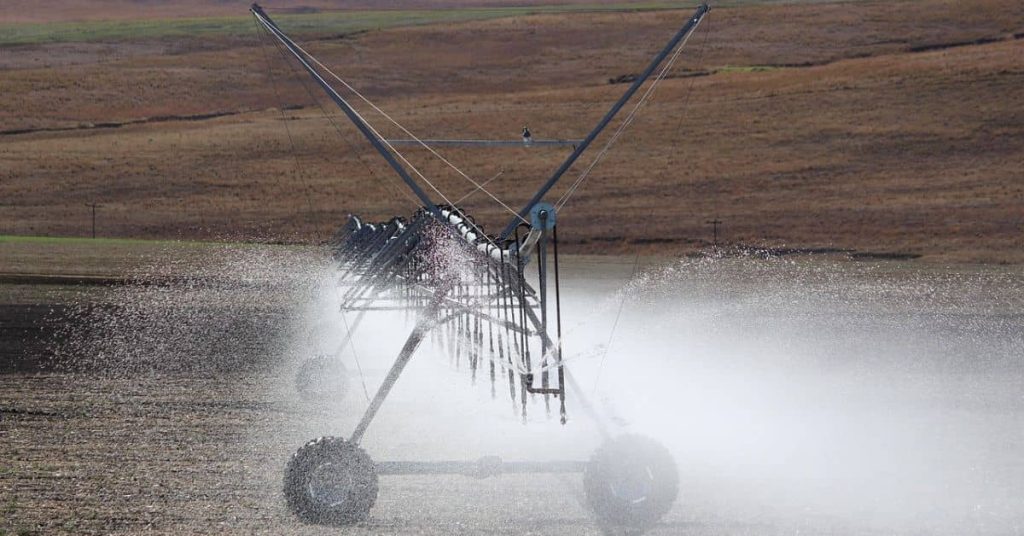
When I first started homesteading in Virginia, I didn’t think much about water, since there always seemed to be plenty. Then we hit a dry spell that stretched through July and August. I watched my rain barrels dry up, garden beds wilt, and my once-content chickens start panting in the heat. That’s when I realized just how much a homestead depends on every drop.
More counties across Virginia are issuing seasonal water restrictions, especially during drought summers. Whether you’re on a well or county water, it’s something you’ve got to plan around. And honestly, it’s better to figure it out before the hose runs dry and your tomatoes start looking like raisins.
Understanding the Limits Before You’re Thirsty
Most folks don’t read the fine print in local ordinances until they’re in trouble, and I didn’t either. But Virginia homesteading laws and regulations can vary a lot by county, especially when it comes to wells, irrigation, and runoff.
For example, some counties now limit non-essential water use (like watering lawns or gardens) during declared droughts. Others have permitting rules for new wells, especially near protected wetlands or in flood-prone areas. The Virginia Department of Environmental Quality posts regional drought updates, but not every restriction is on their main site, as some are only posted at the county level or tucked into building codes.
“I was halfway through installing drip irrigation when I found out I needed a variance for water use,” said Andy W. from Orange County. “I thought I was being proactive, but I skipped a step, and that set me back a month.”
Tip: Call your local extension office or water authority and ask if there are any seasonal or permanent restrictions that might affect gardens, livestock, or well expansion. A ten-minute call can save you weeks of rework.
Rain Catchment and Greywater to the Rescue
The best advice I got? Treat every rainstorm like a payday.
We added two 275-gallon IBC totes last spring and routed our roof gutters into them. During a single overnight thunderstorm, they filled up almost completely. That water now gets used for garden beds, fruit trees, and, after a bit of filtering, our chickens.
Here’s what worked well for us:
- Leaf filters on gutters to keep gunk out of the barrels
- Food-safe totes or barrels, especially if water touches anything edible
- Overflow plans: One storm flooded our first setup because I forgot to install an overflow pipe
And don’t sleep on greywater reuse. We started routing rinse water from the kitchen sink (non-toxic soap only) into a holding bucket. It’s not pretty, but it works for ornamental plants or trees. Some folks even divert washer water to hydrate their lawns or orchards.
Just double-check local regulations, since some counties restrict greywater use or require a basic filtration setup. Better safe than cited.
Planting Smarter, Not Harder
When things get hot and dry, your plant choices matter. I used to grow lettuce all summer until it bolted before I could even pick a second round. Now I focus on drought-tolerant or heat-hardy crops like:
- Sweet potatoes
- Okra
- Peppers
- Cowpeas
- Zinnias (for the bees and for beauty)
We also switched to deep mulch gardening using straw and shredded leaves. It keeps the soil cool, holds moisture longer, and makes weeding less of a chore.
“I mulch like I’m tucking my plants in for a nap,” joked Mina R., a master gardener in Lynchburg. “It’s the only reason I still have tomatoes in late July.”
Water Planning Is Survival Planning
Homesteading in Virginia means preparing for the extremes, such as wet springs and dry, crackling-hot summers. You don’t need a fancy system to get started, but you do need a plan.
Think about:
- How much water you use weekly (chickens alone can go through gallons)
- Where your runoff is going
- How to store, save, and reuse every drop you can
If you’re curious about low-cost ways to harvest rain, build a simple drip system, or get around without a well, I’ve collected a few how-tos from real Virginians doing this right now. Just holler, and I’ll send them your way.
Local Zoning Shifts That Could Affect Your Homestead
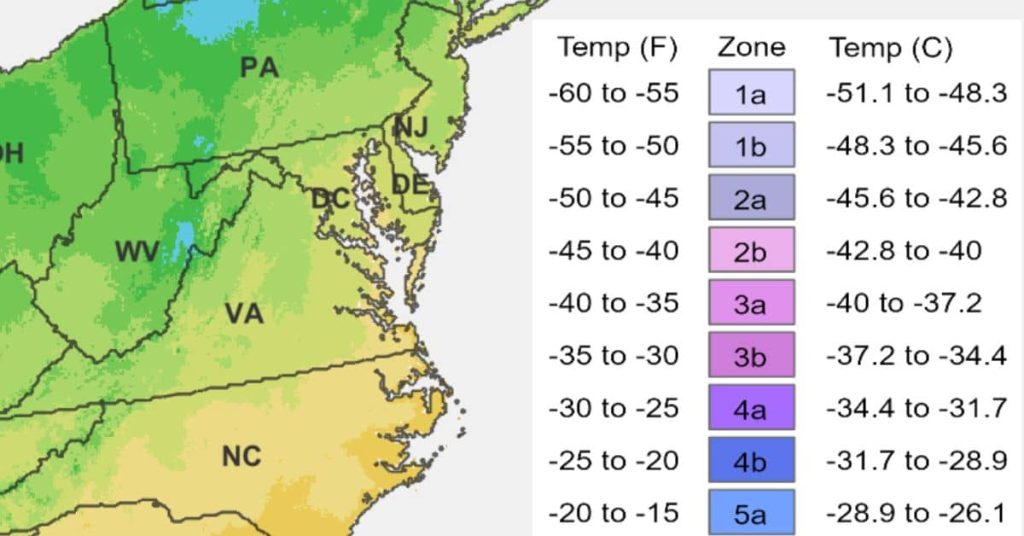
When I first bought land, I figured as long as I wasn’t running a junkyard or trying to open a gas station, nobody would care what I did on my own property. I mean, I just wanted to raise chickens and grow some food, so nothing fancy. But it didn’t take long to learn that homesteading in Virginia means understanding the fine print of local zoning laws. And lately, those rules have started shifting in ways that can trip up even seasoned folks.
Why Zoning Changes Matter (Even If You’re Just Growing Tomatoes)
In the past couple of years, more counties in Virginia have started revisiting their zoning codes. Some of it’s due to population growth, others are trying to balance residential expansion with farmland preservation. But the result is the same: rules are changing, and homesteaders need to stay in the loop.
For example, in parts of Albemarle County, they recently updated their ordinance to limit the number of accessory structures (like sheds and greenhouses) on certain parcels unless they meet specific setback distances. In Loudoun County, you now need a permit for keeping more than a certain number of chickens, even on land previously zoned agricultural.
I wasn’t sure this would apply to me at first. My property was rural, bordered by woods, and I kept to myself. But a neighbor’s complaint about “excessive animal noise” led to a zoning visit that cost me a day of work and a small fine for not having my coop registered. That’s when I realized I needed to treat local zoning like part of my daily homesteading toolkit, just like checking the weather.
Where to Check (and What to Ask)
Your first stop should be your county’s zoning office or planning department. You can usually find zoning maps online, and they’ll tell you what your land is classified as, such as residential, agricultural, rural residential, etc.
Then go a step further. Ask:
- Can I keep poultry or livestock? If so, how many?
- Are there rules about fencing or coop placement?
- Can I sell produce or eggs from home?
- Are tiny homes, yurts, or campers allowed as permanent dwellings?
The Virginia Department of Agriculture and Consumer Services (VDACS) has some helpful links to local zoning and farm use classifications. While they don’t enforce zoning, they help define what counts as agricultural activity, which can affect your property taxes or eligibility for state homesteading programs.
“We found out too late that our township didn’t allow selling from home without a retail license,” said Julie and Ron M., who run a small market garden near Danville. “Now we set up a farm stand just over the county line every Saturday instead.”
Staying Ahead of New Rules
One thing I’ve learned: zoning laws change quietly. They don’t always make the front page, but they do show up at town hall meetings, planning commission updates, and in the fine print of county board announcements.
Here’s what helps me stay informed:
- I subscribed to my county board’s newsletter (doesn’t sound fun, but it works)
- I follow local Facebook groups where someone always posts when a new draft policy hits
- I skim the legal notices in the back of the free weekly newspaper, which is surprisingly useful
If you’re worried about something coming down the pipeline, don’t wait. Talk to a zoning officer, attend a meeting, or ask your extension agent what’s on the radar. Homesteading in Virginia means being part of the conversation, not just reacting after the fact.
If You Run Into a Problem
Don’t panic. Most zoning offices will work with you if you’re respectful and open. I’ve had better luck explaining what I’m trying to do (in plain English) than fighting the rules outright. Sometimes it’s just a matter of paperwork or adjusting where a structure goes.
And if something seems off, or you’re not getting clear answers, reach out to other homesteaders. Someone else in your county has probably dealt with the same issue, and might even have a workaround.
Know Before You Build
I know, zoning talk isn’t exciting. But a few hours spent up front, checking codes, asking questions, and filing a simple permit, can save you months of frustration later.
Homesteading in Virginia means more than just planting seeds and raising animals. It’s also about understanding the system you’re working within, and making sure your homestead can grow without unnecessary surprises.
Recap on Homesteading in Virginia: You’ll Learn as You Go
If there’s one thing I’d say to anyone starting out homesteading in Virginia, it’s this: expect to be humbled, but don’t let that stop you.
When I started, I thought the biggest hurdle would be physical work. And yeah, digging post holes in red clay is no joke. But the real challenge? Learning to pivot, to let go of perfection, and to keep going when your compost goes cold or your tomato starts wilt overnight.
You’re Not Going to Get It All Right the First Time
That’s okay. I didn’t either.
I built my first chicken coop too low to the ground and ended up with a black snake problem. My first raised beds were too close to the house, and I didn’t factor in the shade from the roofline. My well pump failed during a cold snap, and we learned to haul water like pioneers for a week.
But every mistake taught me something. Every season showed me more about what worked in my soil, with my schedule, and for my family.
“Our first year, we lost most of our corn to wind and half our chickens to a raccoon,” said Tanya D. from near Scottsville. “But we grew enough squash to feed three households. You take the wins when they come.”
Focus on Progress, Not Perfection
Homesteading isn’t about mastering everything right away, but about building momentum. Plant one more bed next season. Add a few more hens. Try pressure canning or dig into composting deeper.
The small wins, such as your first cucumber harvest, or finding eggs where you least expect them, keep you going. And those add up.
“I started with two blueberry bushes and a bag of mulch,” said David L., a newer homesteader near Bedford. “Now we’ve got a full garden, bees, and I’m learning to graft apple trees. But I still mess things up every week.”
The Best Thing You Can Do? Ask for Help
Virginia’s full of folks who’ve been there, made the mistakes, and are happy to tell you how they fixed them. Some of the best tips I’ve ever gotten came from talking to old-timers at the feed store or dropping into a local seed swap.
Whether it’s checking in with your Virginia Cooperative Extension office, hopping into a local Facebook group, or just knocking on a neighbor’s door to ask about their garden, start the conversation.
If You’re Still on the Fence
If you’re thinking about starting, but you’re overwhelmed by zoning rules, money, or just not knowing where to begin, that’s totally normal. I’ve been there. Most of us have.
Start with what you can manage:
- A compost bin.
- A few containers on the porch.
- Three chickens and a weekend fencing project.
Then keep building.
Homesteading in Virginia doesn’t have to look like a full-time farm or an Instagram-perfect barnyard. It just has to work for you.
You’re Not Alone in This
Looking back, the thing that rattled me most wasn’t the busted water line or the zoning curveballs, but feeling like I had to figure it all out by myself. But homesteading in Virginia has shown me that the learning never really stops, and that asking for help or sharing what went wrong is just as valuable as the harvest itself.
There’s no shame in starting small, changing your mind, or learning the hard way. That’s part of what makes this real. So give yourself permission to start imperfectly. And when things go sideways (because they will), come back here. You’re not alone, and you’re doing better than you think.
Let’s make this a space where we can swap stories and help each other out.
What’s something you learned the hard way on your homestead, or something you wish someone had told you sooner?
Drop it in the comments. I’d love to hear your story, and chances are, someone else out there could learn from it too.
Disclaimer: The information provided in this article is for general informational purposes only and is not intended to be a substitute for professional advice. The author of this article does not claim to be an expert in homesteading and the information provided should not be relied upon to make decisions about your own homesteading journey. Please do your own research and consult with a qualified professional before making any decisions about your homestead.
Share via:
Shaun Alexander is the main writer and editor for HomesteadingSimple.com. With a strong passion for homesteading and sustainability, Shaun has dedicated his life to learning and sharing information about a simple, fulfilling existence tied to the land. His expertise ranges from gardening and livestock management to off-grid living and DIY projects, reflecting the diverse skills necessary for a successful homesteading lifestyle. Shaun’s goal is to inspire and educate others about the possibilities of homesteading, whether in rural, suburban, or urban settings, and to provide practical advice and tips for both beginners and seasoned homesteaders. He believes in a future where more people return to their roots, embracing a life of self-sufficiency and harmony with nature.

